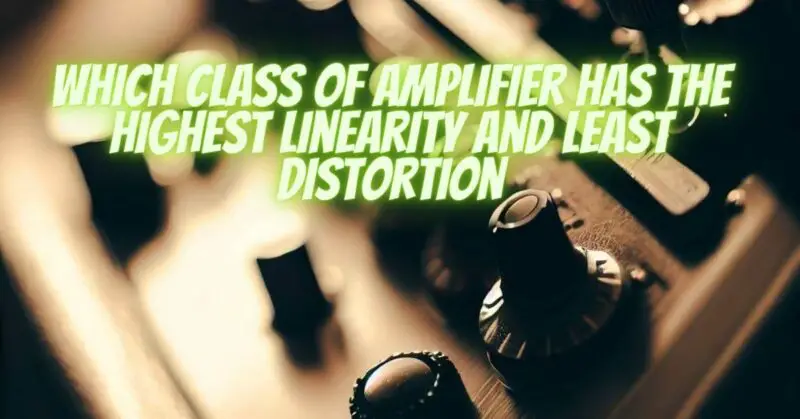When seeking audio amplification that upholds the utmost fidelity and purity, the considerations of linearity and distortion become paramount. Amplifiers play a pivotal role in reproducing audio signals accurately, and selecting the right amplifier class can make all the difference in maintaining sonic integrity. In this article, we’ll embark on a journey through amplifier classes to discover which class offers the highest linearity and the least distortion, creating an immersive auditory experience.
Understanding Linearity and Distortion
Linearity in an amplifier refers to its ability to amplify an input signal without altering its shape or introducing any additional components that weren’t present in the original signal. In essence, a linear amplifier produces a faithful reproduction of the input waveform, ensuring that the output remains proportional to the input across all frequencies and amplitudes.
Distortion, on the other hand, occurs when an amplifier deviates from producing a faithful replica of the input waveform. This can manifest in various ways, such as harmonic distortion, intermodulation distortion, and crossover distortion. Distortion is often perceived as unwanted noise, coloration, or alteration of the audio signal, ultimately diminishing the quality of sound reproduction.
Amplifier Classes and Linearity
Amplifier classes are categorized by their circuit designs and operating principles, which inherently influence their linearity and distortion characteristics. Among the classes, Class A and Class A/B stand out as the torchbearers of superior linearity due to their continuous operation and reduced crossover distortion.
Class A Amplifiers exhibit high linearity by maintaining their output transistors in a conducting state at all times, regardless of the input signal. This results in minimal distortion, as there is no abrupt switching or transition that could introduce nonlinearity. The constant conduction, however, leads to low efficiency and considerable heat generation, making Class A amplifiers less practical for high-power applications.
Class A/B Amplifiers strike a balance between linearity and efficiency. These amplifiers employ two transistors, each responsible for amplifying a distinct portion of the input waveform. The transition between these transistors is smooth, reducing crossover distortion and enhancing linearity. Class A/B amplifiers are widely used in audio systems where a compromise between linearity and efficiency is sought.
Amplifier Classes and Distortion
While Class A and Class A/B amplifiers excel in linearity, they are not entirely devoid of distortion. In these classes, harmonic distortion and thermal distortion can still occur due to the inherent characteristics of the amplification process.
On the other hand, Class D amplifiers have historically been associated with higher distortion levels due to their pulse-width modulation (PWM) switching technique. The rapid switching can introduce nonlinearity and create harmonic distortion. However, modern advancements in Class D design and technology have significantly reduced distortion levels, making them more suitable for high-quality audio applications.
Striking the Balance
The pursuit of both high linearity and low distortion is a delicate balancing act. While Class A and Class A/B amplifiers offer impressive linearity, they may come with higher energy consumption and heat production. Class D amplifiers, though historically perceived as less linear, have evolved to offer a compromise between efficiency, linearity, and distortion.
Selecting the right amplifier class depends on your priorities and application requirements. If audio purity is paramount and energy consumption isn’t a concern, Class A or Class A/B amplifiers might be your preference. For those seeking a modern solution with efficient power usage and improved linearity, contemporary Class D amplifiers are worth considering.
Amplifier classes wield a significant influence over the linearity and distortion characteristics of audio signals. While Class A and Class A/B amplifiers traditionally champion high linearity, the landscape has evolved, and Class D amplifiers have risen to the challenge of minimizing distortion while offering greater efficiency. The choice between these classes hinges on your specific audio goals, system requirements, and the balance you seek between audio quality and operational efficiency.


